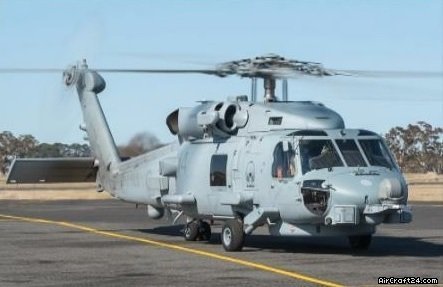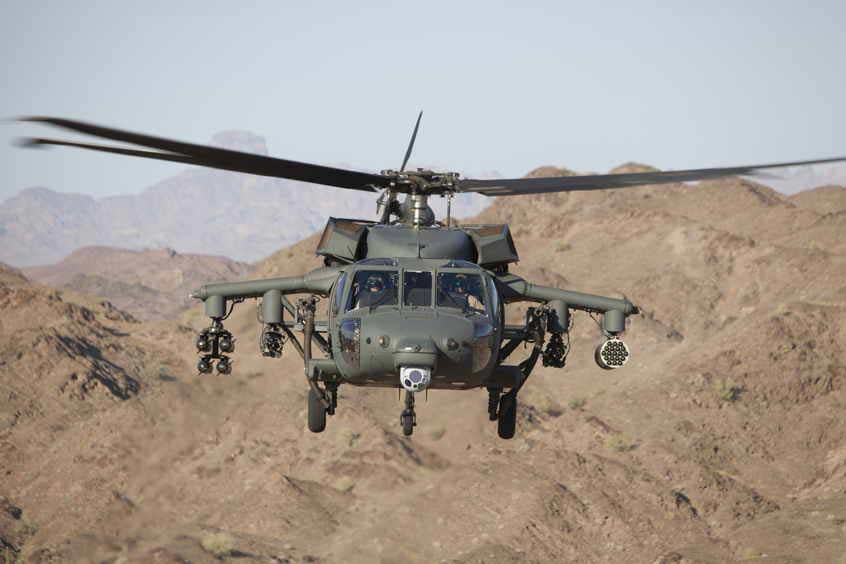The Sikorsky S 70 Helicopter: A Deep Dive into Its Design and Performance
The Sikorsky S 70 Helicopter: A Deep Dive into Its Design and Performance
Blog Article
High-Performance Multi-Role Rotorcraft Featuring Advanced Cockpit Technologies and Integrated Sensing Unit Systems
The realm of rotorcraft modern technology has actually seen significant improvements in recent times, specifically in the world of high-performance multi-role rotorcraft furnished with advanced cabin innovations and perfectly integrated sensing unit systems. In the following conversation, we will certainly explore the advancement of rotorcraft innovation, delve right into the realm of innovative cockpit innovations, and check out the implications of incorporated sensor systems on the functional flexibility and performance of contemporary rotorcraft.
Evolution of Rotorcraft Innovation
The evolution of rotorcraft modern technology has been noted by considerable innovations in aerodynamics, materials, and propulsion systems, shaping the abilities and performance of contemporary rotorcraft. Aerodynamic improvements have enhanced the effectiveness and ability to move of rotorcraft, permitting raised speed, dexterity, and security throughout flight (sikorsky s 70). Advancements in products, such as making use of composite materials and advanced alloys, have actually led to lighter yet more powerful rotorcraft frameworks, boosting overall performance and longevity. Additionally, improvements in propulsion systems, consisting of more powerful engines and ingenious propulsion modern technologies, have actually enabled rotorcraft to achieve higher altitudes, faster speeds, and higher hauls.
These innovations have not just transformed the capabilities of rotorcraft but have likewise broadened their applications across various industries, consisting of army, business, and emergency services. The continuous advancement of rotorcraft modern technology proceeds to drive development in the field, pressing the limits of what is feasible and forming the future of upright flight.
Advanced Cabin Innovations
Building upon the foundational innovations in the rules of aerodynamics, materials, and propulsion systems, the world of rotorcraft innovation now changes focus in the direction of pioneering Advanced Cabin Innovations. The combination of advanced modern technologies within the cockpit setting plays a vital duty in boosting the operational capacities, security, and efficiency of contemporary rotorcraft. sikorsky s 70. Advanced Cockpit Innovations incorporate a large array of attributes designed to supply pilots with enhanced situational recognition, streamlined data monitoring, and user-friendly control interfaces
One of the vital improvements in cabin design is the execution of glass cockpits, which change standard analog determines with high-resolution displays. These digital systems provide personalized formats, real-time information integration, and boosted readability, enabling pilots to gain access to critical info at a look. Progressed avionics systems, such as fly-by-wire controls and augmented fact screens, are changing just how pilots interact with the airplane, allowing for accurate control and improved decision-making abilities.


Integrating advanced cockpit innovations not only boosts pilot performance however also adds to total objective performance and safety in complicated functional settings. By leveraging cutting edge innovations within the cabin, rotorcraft producers are establishing brand-new criteria for operational excellence and objective success.
Integrated Sensing Unit Systems
With the evolution of rotorcraft innovation, the assimilation of innovative Integrated Sensor Systems has ended up being extremely important in enhancing operational efficiency and safety. These Integrated Sensor Solutions include a vast selection of technologies that provide vital information for numerous functions such as navigation, monitoring, targeting, and environmental tracking. By seamlessly incorporating sensors like radars, video cameras, lidar, and infrared systems into rotorcraft, operators can benefit from improved situational awareness, enhanced goal capacities, and lowered visit the website pilot work.
One secret advantage of Integrated Sensor Systems is their capacity to collect real-time data and offer actionable understandings to pilots and objective operators. As an example, progressed radar systems can identify and track targets over cross countries, enabling early threat discovery and efficient reaction preparation. Furthermore, integrating infrared and electro-optical electronic cameras allows rotorcraft to conduct reconnaissance and monitoring objectives with precision and accuracy.
Essentially, the integration of advanced sensor innovations into rotorcraft not only enhances functional efficiency yet likewise adds substantially to overall objective success and staff security. As rotorcraft proceed to develop, the duty of Integrated Sensor Solution will certainly continue to be at the forefront of development in the aerospace sector.
Operational Adaptability and Efficiency
Enhancing operational adaptability and efficiency in rotorcraft is a natural development from the assimilation of advanced Integrated Sensor Solutions. By leveraging the insights and data supplied by these sophisticated sensor systems, rotorcraft can optimize their performance across different goals and settings.
Operational versatility includes the capability of rotorcraft to adapt to various duties and situations efficiently. With sophisticated cockpit technologies and integrated sensing unit systems, rotorcraft can perfectly shift in between jobs such as search and rescue, clinical discharge, security, and extra. This versatility enhances the rotorcraft's capability to fulfill varied functional demands without calling for considerable reconfiguration.
Performance in rotorcraft procedures is vital for making the most of Read Full Article mission effectiveness and source application. Integrated sensing unit systems play an essential function in enhancing functional effectiveness by offering real-time data on weather, terrain mapping, target monitoring, and a lot more. This data enables pilots to make enlightened decisions swiftly, maximize flight paths, save fuel, and boost general mission performance.
Influence on Modern Aviation Workflow

Furthermore, the combination of innovative sensors assists in improved objective preparation and implementation, enabling rotorcraft to do a large range of tasks with improved accuracy. From search and rescue procedures to aerial firefighting and police objectives, the capacities of modern rotorcraft geared up with sophisticated cabin modern technologies and incorporated sensor systems are exceptional.
In addition, the influence of these advancements extends beyond operational efficiency to cost-effectiveness and sustainability. By optimizing trip paths, fuel consumption, and upkeep routines, high-performance rotorcraft furnished with advanced cockpit innovations and sensing units add to minimizing functional expenses and environmental effect, making them vital properties in modern-day air travel procedures.
Final Thought
Finally, the high-performance multi-role rotorcraft with sophisticated cockpit innovations and integrated sensor systems stands for a substantial advancement in air travel innovation. These developments enhance operational convenience and performance, eventually impacting modern aeronautics operations in a positive means. The combination of these sophisticated technologies enables enhanced abilities and performance in numerous objective scenarios, showcasing the proceeded development of rotorcraft technology in the aeronautics market.
The world of rotorcraft innovation has seen remarkable improvements in recent times, especially in the realm of high-performance try this out multi-role rotorcraft equipped with innovative cabin technologies and seamlessly incorporated sensor systems. From improved goal adaptability to improved operational performance, the convergence of innovative cockpit innovations and incorporated sensor systems has actually ushered in a new age of opportunities for rotorcraft applications. In the following conversation, we will certainly check out the development of rotorcraft technology, dive right into the realm of sophisticated cockpit innovations, and take a look at the effects of integrated sensor systems on the functional versatility and efficiency of contemporary rotorcraft.

Report this page